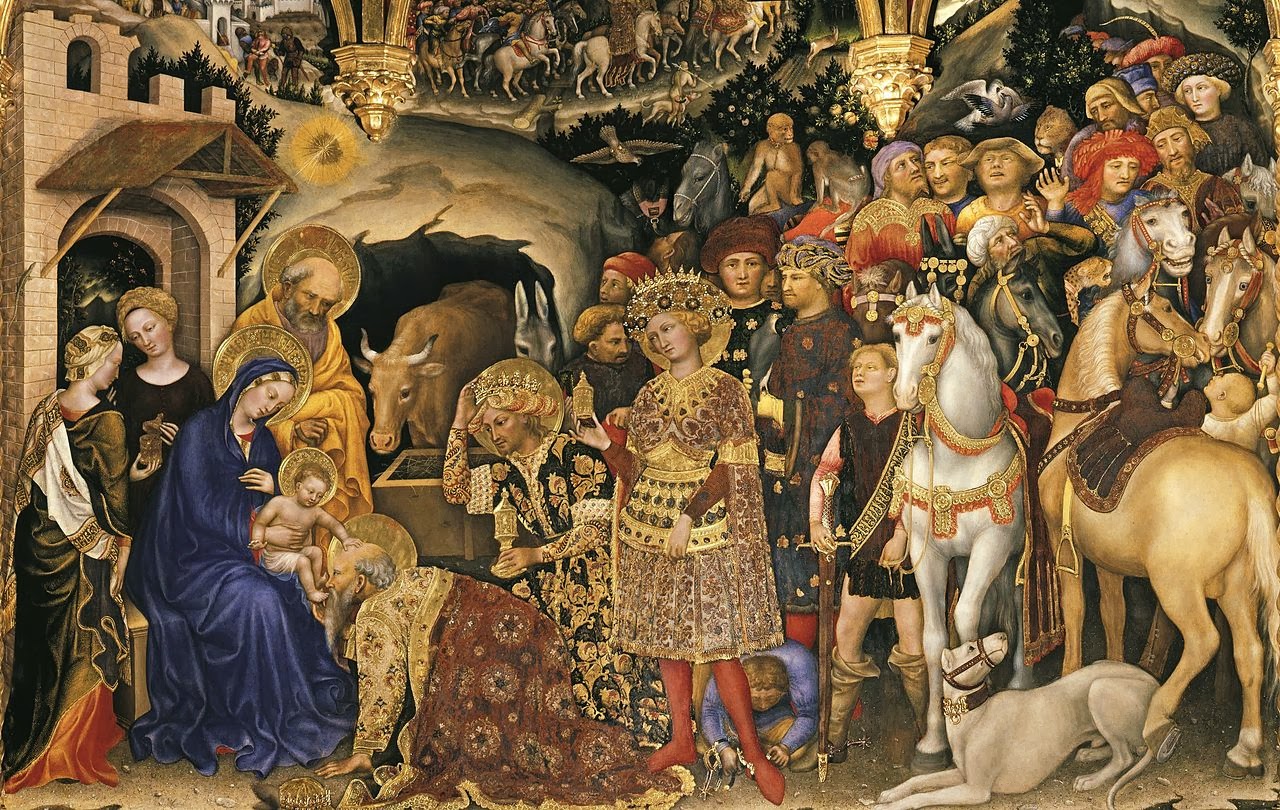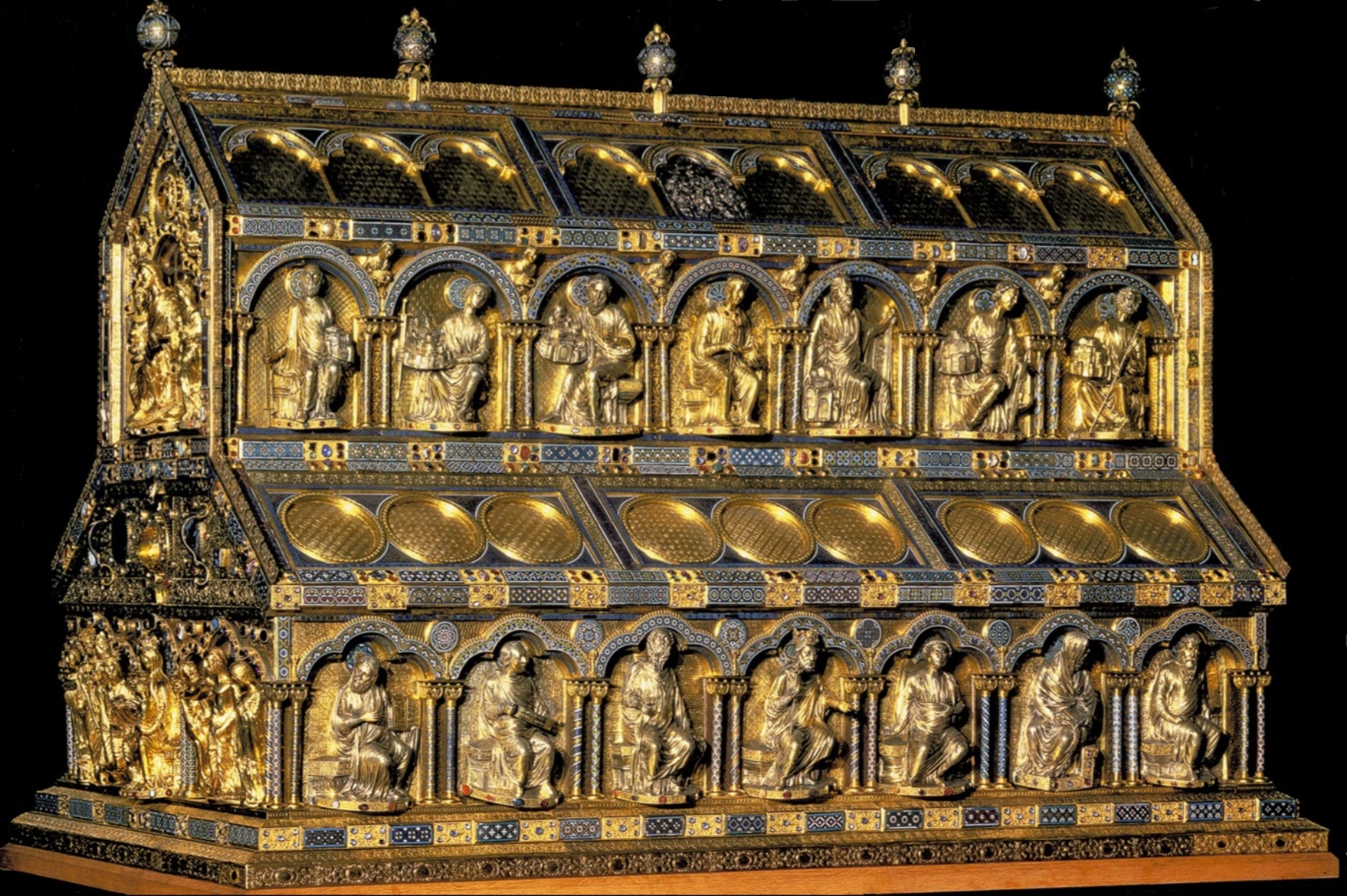The Christian tradition celebrates within Christmas, the Epiphany or Adoration of the Magi to the Child. An event that Psalm 72 already prophesied: kings shall bow down before Him; all nations shall serve Him.. A historical fact narrated by St. Matthew in the Gospel: When Jesus was born in Bethlehem of Judea in the time of Herod the king, behold, wise men came from the East to Jerusalem (...) When they entered the house, they saw the child with Mary his mother, and fell down and worshipped him, and opened their treasures and offered him gifts: gold, frankincense and myrrh..
Each of these gifts from the magi to the Child God contained a profound meaning: with the gold they recognized his status as King; with the frankincense, his divine nature, since from ancient times it was used for the worship of the gods; and with the myrrh, which was used in funeral rites and embalming, they made reference to the human nature of Jesus.

A POPULAR FESTIVAL
With time, in many countries of Catholic tradition, the custom was adopted of celebrating at the same time, on January 6, the feast of the Epiphany and that of the Magi, thus combining the manifestation of Jesus to the non-Jewish world with the feast of these characters who represented precisely that world of the Gentiles. Little by little the common people forgot the true meaning of the word epiphany and turned it into a synonym for the adoration of the Magi.
In Spain, Argentina, Mexico, Chile, Peru, Colombia, Paraguay, Venezuela, Ecuador and other Spanish-speaking countries there is the feast of the Three Kings, accompanied by the custom of giving gifts to children (and by extension to the elderly) on the night of January 5. Also in many places the so-called Cabalgata de Reyes is organized where the Three Wise Men march accompanied by characters on horseback or in floats, dressed in cloaks and crowns, substitutes for the more unknown Phrygian costume.
It is interesting to note that at the time of the Spanish colonization, especially in Cuba and Puerto Rico, this day was a holiday for the black slaves who went out to the streets to dance to the rhythm of their drums. This originated the name of Pascua de los Negros with which the day is still known in some countries.
THE CULT OF THE MAGI
The cult of these historical figures was recognized and admitted from the beginning by the Church, which places them among its saints. There is an old tradition of venerating the remains of the Magi, which are preserved and exhibited in a reliquary in the Cathedral of Cologne.
It is worth a reference to this jewel of Mosan art, made at the beginning of the 13th century by the best French artist of the time, Nicolas Verdun and the Germanic master goldsmiths. The reliquary has the shape of a basilica and gigantic proportions for this kind of urn: 2.20 meters long, made of solid gold and silver, enamels and jewels of incalculable value.

Reliquary of the Magi, Nicolás Verdún (13th century)
WERE THERE REALLY THREE MAGICIANS?
In neither of the two texts referred to in Sacred Scripture - neither in the Book of Psalms nor in the Gospel - is the number or race of these magi specified, but scholars find symbolism in the number three, which may allude to the three continents then known: Europe, Asia and Africa; and to the three persons of the Holy Trinity. It is also a symbolic detail that, already in the fourteenth century, these royal personages were represented with features of different races, as signifying the universal acceptance and recognition of the arrival of the Messiah awaited and announced.
Continuing with the symbolism, in the Middle Ages, we find representations of the Magi that make a distinction of age, as a way of transmitting that every man, in youth, maturity and old age, bends the knee before God incarnate.
THE WORSHIP OF THE MAGI IN ART
Throughout the centuries this scene of the Christian tradition has been reflected by many artists around the world in the most varied expressions and techniques: painting, sculpture, silverware,... In this post, we leave some samples of the Epiphany, in which the kings are represented in an attitude of adoration:
